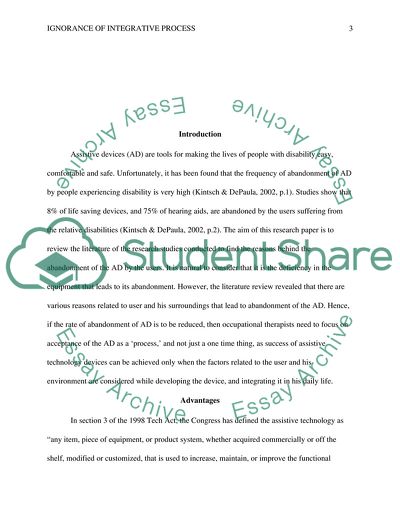Cite this document
(Ignorance of Integrative Process: Reason for Abandonment of Assistive Research Paper - 1, n.d.)
Ignorance of Integrative Process: Reason for Abandonment of Assistive Research Paper - 1. https://studentshare.org/health-sciences-medicine/1802323-reasons-for-the-abandonment-of-assistive-devices-by-persons-with-disabilitis
Ignorance of Integrative Process: Reason for Abandonment of Assistive Research Paper - 1. https://studentshare.org/health-sciences-medicine/1802323-reasons-for-the-abandonment-of-assistive-devices-by-persons-with-disabilitis
(Ignorance of Integrative Process: Reason for Abandonment of Assistive Research Paper - 1)
Ignorance of Integrative Process: Reason for Abandonment of Assistive Research Paper - 1. https://studentshare.org/health-sciences-medicine/1802323-reasons-for-the-abandonment-of-assistive-devices-by-persons-with-disabilitis.
Ignorance of Integrative Process: Reason for Abandonment of Assistive Research Paper - 1. https://studentshare.org/health-sciences-medicine/1802323-reasons-for-the-abandonment-of-assistive-devices-by-persons-with-disabilitis.
“Ignorance of Integrative Process: Reason for Abandonment of Assistive Research Paper - 1”. https://studentshare.org/health-sciences-medicine/1802323-reasons-for-the-abandonment-of-assistive-devices-by-persons-with-disabilitis.


